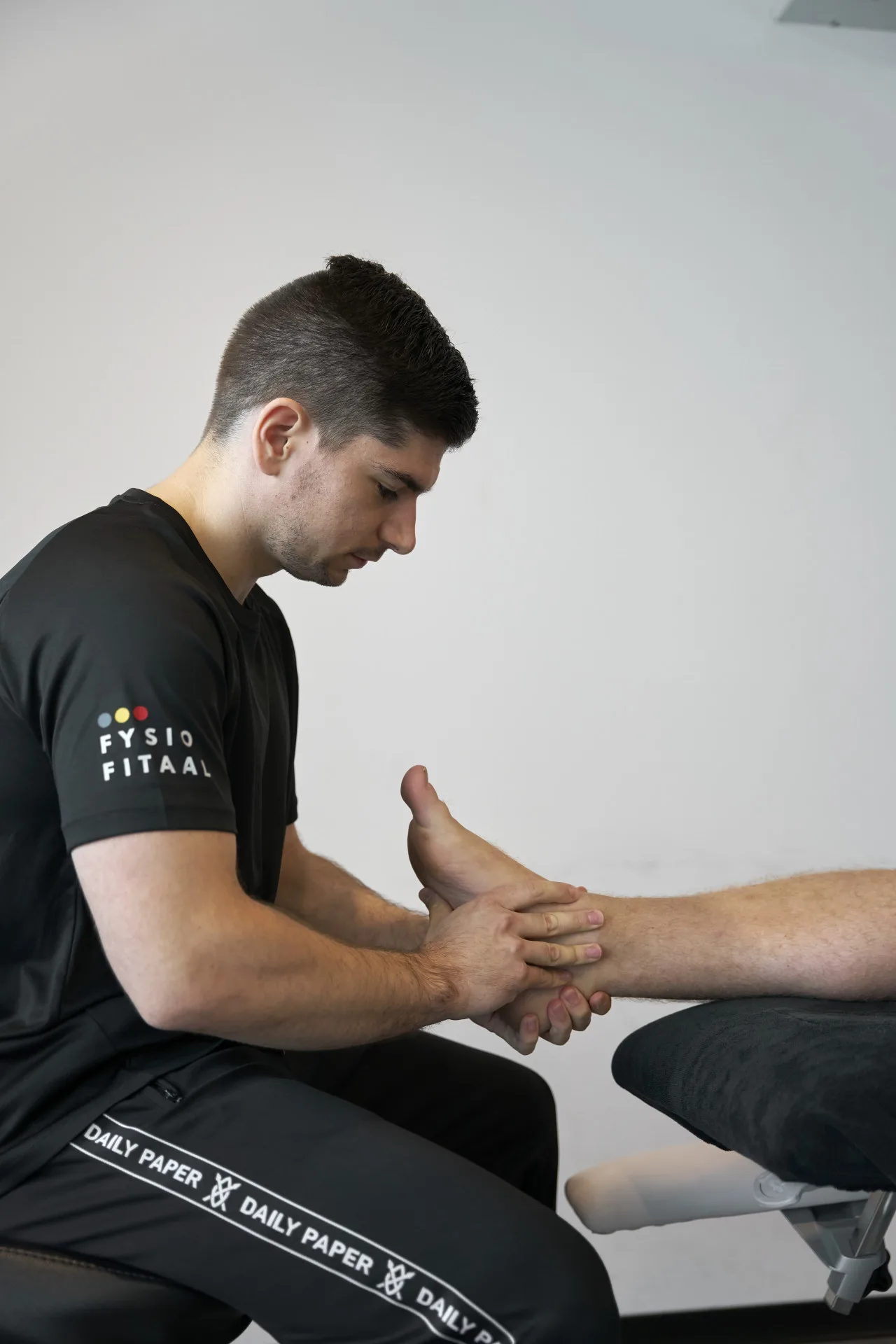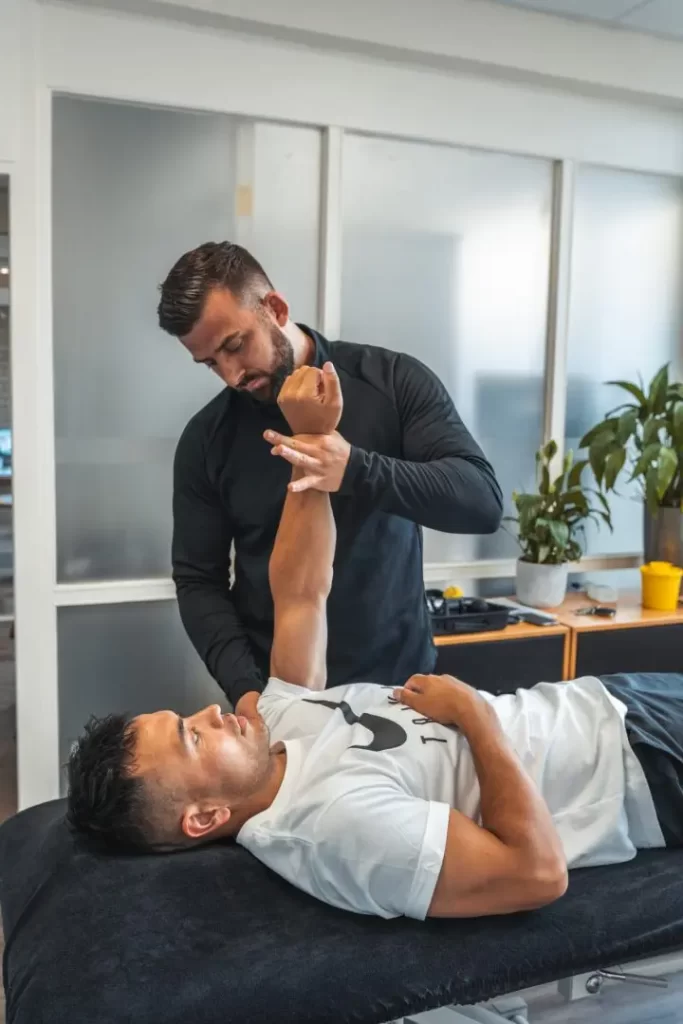When spraining the ankle, one or more ankle ligaments are often stretched or torn. In the Netherlands, most ankle injuries occur during football, both with and without contact with an opponent. The most commonly affected ankle ligament in a sprain is the ligamentum talofibulare anterius (ATFL), the anterior ankle ligament. This ligament catches the strain first during inversion trauma (tilting the foot inwards). In more severe injuries, other ankle ligaments may also be damaged, depending on the degree of stress during the trauma.
Bone fractures and additional injuries
In 5-20% of ankle traumas that end up in the emergency room, there is a bone fracture. During a physiotherapy examination, if a fracture is suspected, the Ottawa Ankle Rules, a guideline to assess whether additional imaging, such as an X-ray, is needed.
Another possible injury after inversion trauma is damage to the syndesmosis, a firm fibrous structure connecting the tibia (tibia) and fibula (fibula). The syndesmosis plays a crucial role in the stability of the ankle joint. Injury to this structure occurs in 11-18% of inversion traumas and significantly prolongs recovery, as the tibia and fibula must stay together for a stable ankle.
For ankle ligament injuries without bone fractures or syndesmotic injuries, pain usually subsides significantly within two to three weeks. For some, however, long-term symptoms, such as instability, remain. This instability where the ankle regularly "sags," is more common in people who have had a previous ankle injury. This highlights the importance of a proper rehabilitation programme to prevent new injuries.



